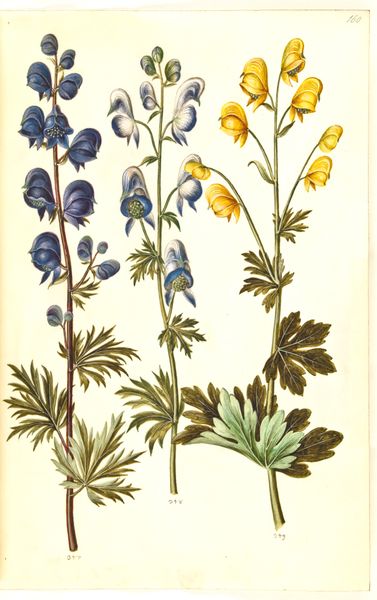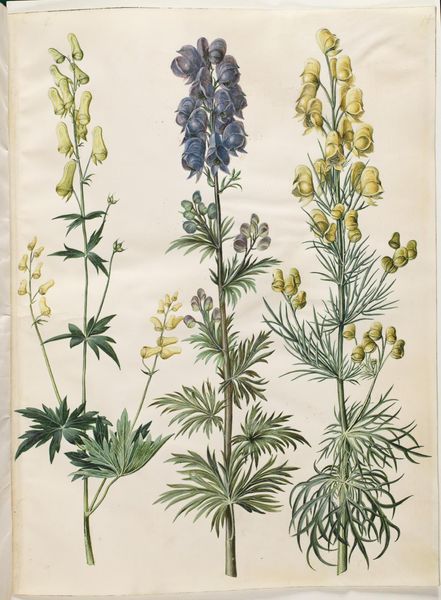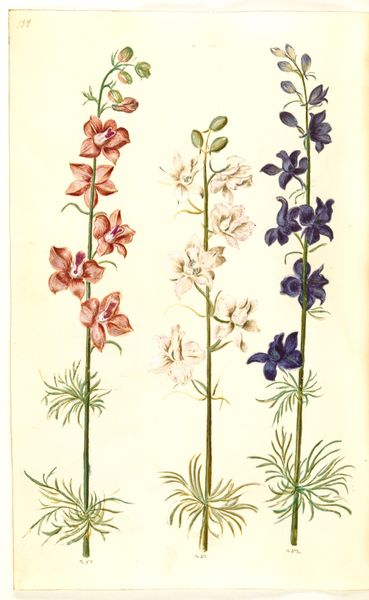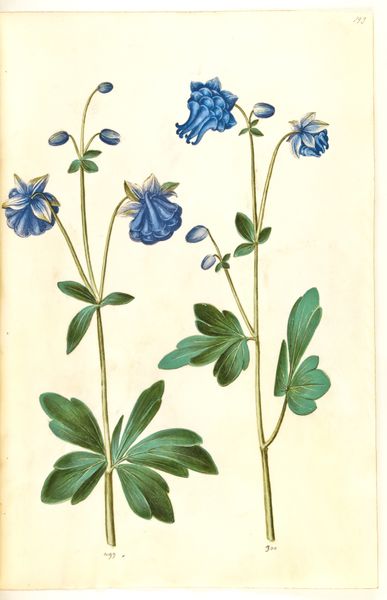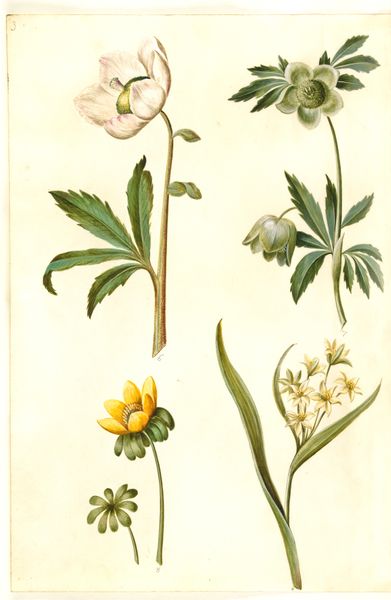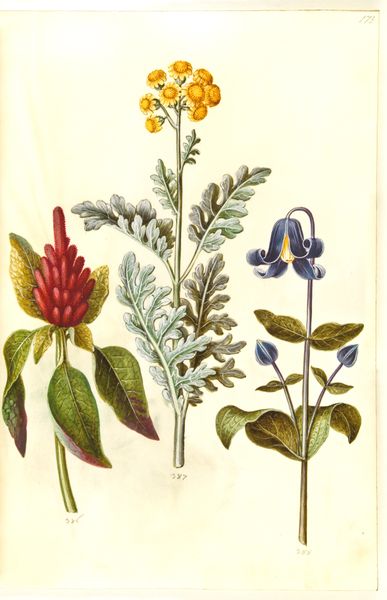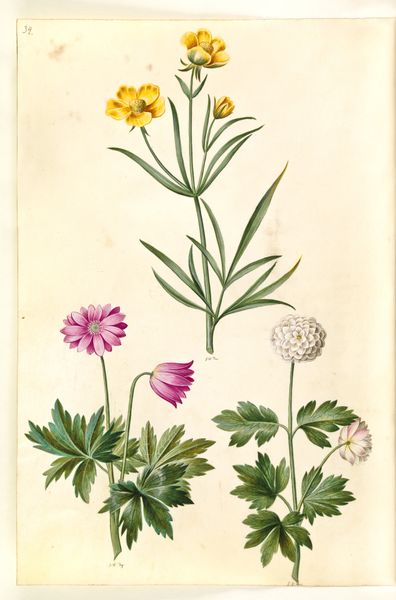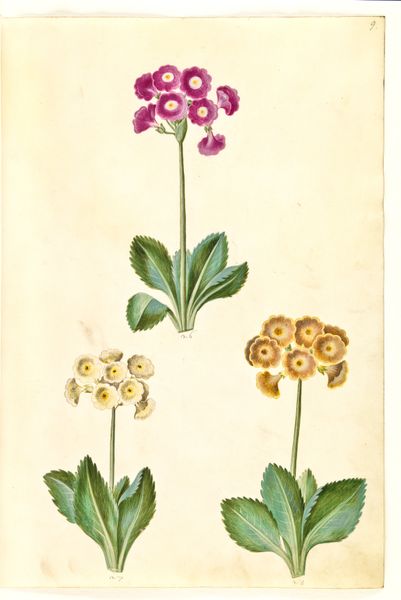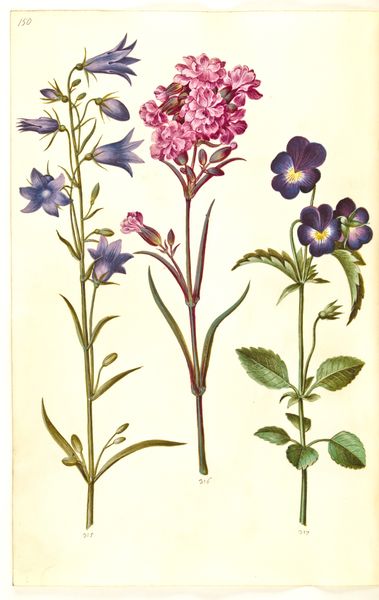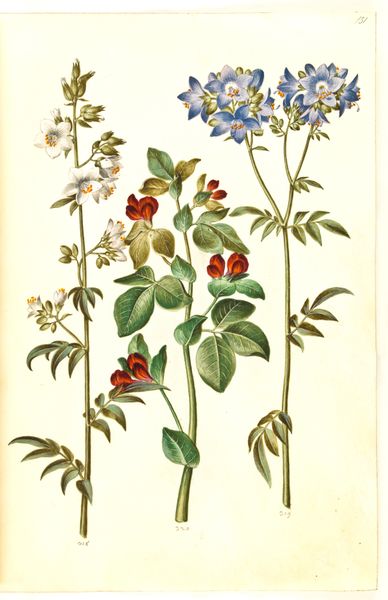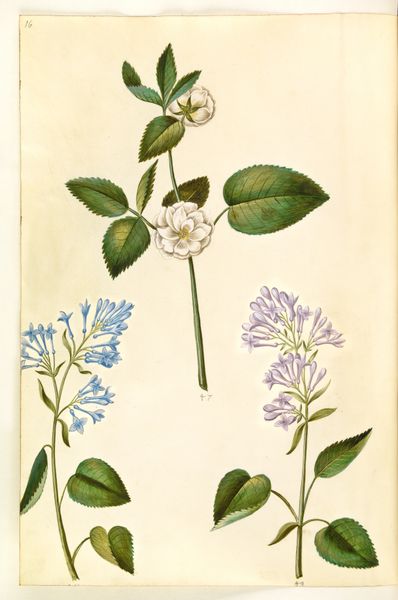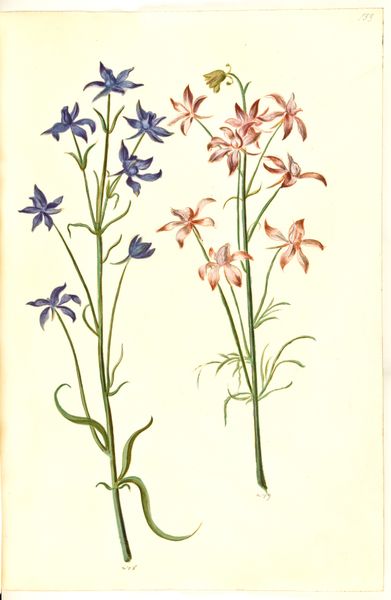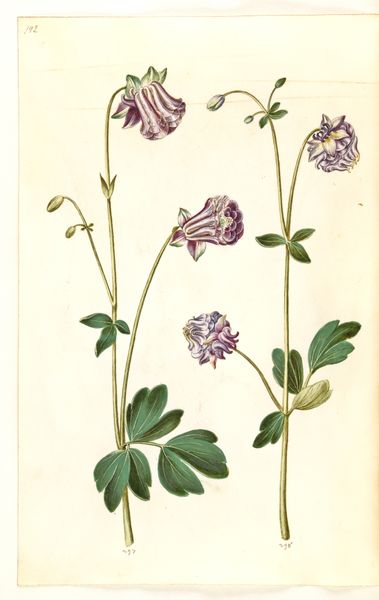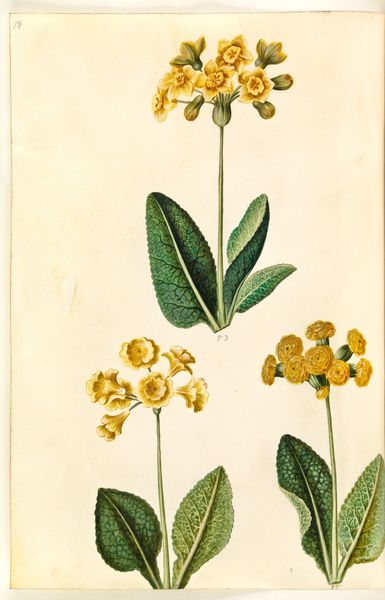
Lupinus pilosus (blå lupin); Lupinus albus (hvid lupin); Lupinus luteus (gul lupin) 1635 - 1664
0:00
0:00
drawing, gouache
#
drawing
#
gouache
#
botanical illustration
#
botanical drawing
#
watercolour illustration
#
northern-renaissance
#
realism
Dimensions: 375 mm (height) x 265 mm (width) x 85 mm (depth) (monteringsmaal), 358 mm (height) x 250 mm (width) (bladmaal)
Hans Simon Holtzbecker created this watercolour and gouache drawing of lupins in Denmark, sometime in the 17th century. Holtzbecker worked in a period when botanical illustration was shifting from being purely descriptive to an important part of scientific documentation. This drawing would have been commissioned as a record of these specific plants; perhaps as part of a royal collection, or for a wealthy patron interested in botany and natural history. Consider the intense details of the plant's anatomy, the choice of presenting three different species side-by-side, and the scientific notations at the bottom. These clues tell us about the culture of inquiry during the artist's time. Botanical illustration served both aesthetic and scientific purposes, reflecting the cultural values of observation, classification, and the expanding knowledge of the natural world. To really understand this piece, we can look at the history of botany, the culture of collecting and natural history in 17th-century Europe and, of course, Holtzbecker's own biography. These resources help us see how art is embedded in, and shaped by, its time.
Comments
No comments
Be the first to comment and join the conversation on the ultimate creative platform.
